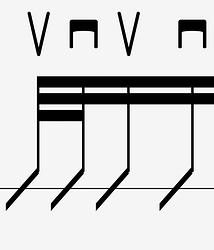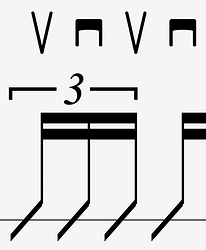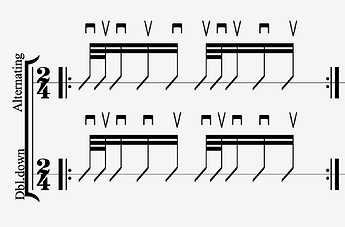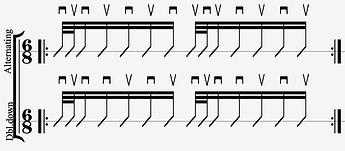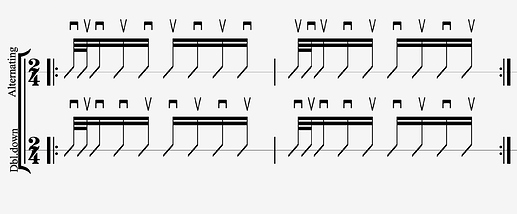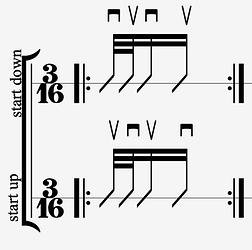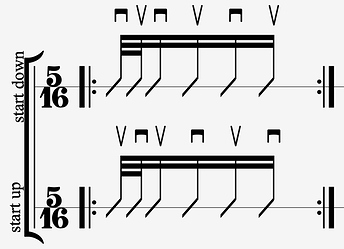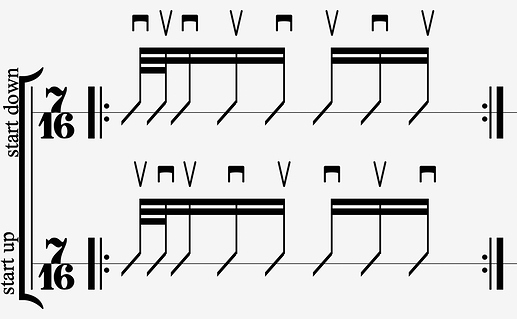OK SO
I’ve spent some time with this, with the interest in the more academic/pedagogical questions in this thread…rhythm, mechanical efficiency, and physical comfort.
So far I have not been able to crack the tempo with any method, but it’s been interesting to note ‘what goes wrong’ with different methods.
When I do pure alternating strokes, it’s very difficult for me to NOT turn this figure:
into this:
Past a certain tempo it’s hard for me to aurally register the difference between these rhythms (personally I’ve found that to be roughly the 120bpm area) but doing the hard ‘stop’ and leaving the appropriate gap after the second upstroke is tricky.
It’s interesting that before trying this out, I/we were talking about potential difficulty of syncing upstrokes with downbeats, but I’ve found that’s not too crazy as it’s something I’ve done a lot - what’s much harder for me is just making that distinction happen.
Doing those as D U D D, unsurprisingly this was easier to keep the correct rhythm at slower tempos, but harder to push to higher tempos. However, I spent less time with the doubled-down stuff, maybe in part because it’s more relevant/broadly useful for me to improve my time-keeping flexibility rather than my downstroke endurance.
Observations I think are interesting:
if we have an ‘even numbered’ pattern that has one occurrence of this 32/32/16th bit, then we wind up with this challenge/question of doing all alternating, or doubling some strokes. If the pattern is odd, we do not have that issue, and instead can coast on a repeating sequence of down/up strokes with no variation in the stroke<–>rhythm orientation:
even:
4 16ths:
6 16ths:
8 16ths:
12 16ths:
etc
odd:
since purely alternating stroeks are possible in ‘one loop’ for these patterns, there’s no ‘double down’ view, and instead the top staff starts with downstroke and the bottom stafff starts with upstroke.
“3s” (bleed pattern):
“5s”
So if one did want to get good at that 32 32 16th rhythm as up down up, I think the odd numbered ones are good for approaching this as we can keep the endurance challenge but stick with one picking orientation.
Of course, for every additional 32/32/16 bit, it flips things again, so if there are two occurrences of it within a figure, the opposite of the above would be true; odd numbered patterns will have to flip, even numbered patterns won’t. Eg, 4/4:
the above will restart on a downstroke each time because the “flipping” mechanism occurs twice.
All that being said, here’s a challenging figure I’ve been messing around with:
(starting with up)
(starting with down)
Basically forces you to really hear and play that distinction between the bleed thing and the triplet, and allows for the same stroke pattern on each repetition.

